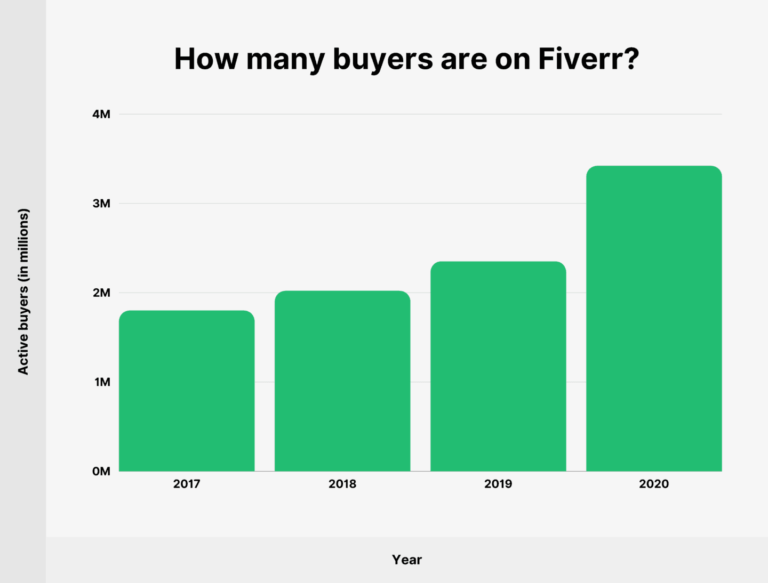Fiverr has transformed the way freelancers and businesses connect around the globe. Launched in 2010, this online marketplace empowers individuals to offer services, referred to as "gigs," across diverse categories ranging from graphic design to digital marketing. With millions of users, it serves as a hub for freelancers and clients alike, making it easier than ever to find cost-effective services. Whether you're a freelancer looking to showcase your talents or a business seeking specialized support, Fiverr provides a flexible platform that meets these needs. However, understanding Fiverr's fee structure is crucial for maximizing your experience on the platform.
Overview of Fiverr's Fee Structure

When diving into the world of Fiverr, it’s essential to familiarize yourself with its fee structure, as it can influence both the pricing of services and the earnings of freelancers. Here’s a breakdown of how Fiverr's fees work:
- Service Fees for Buyers: Buyers are required to pay a service fee that typically ranges from 5% to 20% depending on the order amount. For example, if you purchase a gig for $100, you'll pay an additional fee of either $5 or $20, based on the total price.
- Commission for Sellers: Once a freelancer completes a gig and the buyer approves it, Fiverr takes a commission of 20% from the total payment. If you sell a gig for $100, you’ll receive $80.
- Withdrawal Fees: When freelancers withdraw their earnings, they might incur additional fees depending on their chosen withdrawal method. For instance, withdrawing funds to a PayPal account can attract a fee of $1, while bank transfers may have different charges based on the bank policy.
- Currency Conversion Fees: If you’re dealing in different currencies, stay alert for conversion fees. Fiverr applies fees for converting earnings to your local currency so that freelancers in different countries receive their payouts.
Being aware of these fees can greatly enhance your experience on Fiverr. So, ensure you include these costs when you price your gigs or consider the total price of a service you wish to purchase!
Also Read This: How to Create a Fiverr Writing Account
3. Breakdown of Fees for Services

If you're considering using Fiverr, understanding their fee structure is crucial for both buyers and sellers. Fiverr's pricing model can seem a bit puzzling at first, but once you break it down, it’s pretty straightforward.
When you set up your gig on Fiverr, there's a standard service fee that you should be aware of. Here's how it typically works:
- Service Fee for Sellers: Fiverr takes a 20% commission on the total earnings from each completed order. This means that if you sell a gig for $100, Fiverr retains $20, and you receive $80.
- Additional Fees for Buyers: When buyers purchase a service, they also pay a service fee which varies based on the order amount. Generally, it falls between 5% to 20%. For instance, a $50 gig may have an additional fee of $2.
- Currency Conversion Fee: If you’re dealing in a different currency, keep in mind that Fiverr might apply a conversion fee, which can vary based on your payment method.
Now, let’s break it down in a table for clearer understanding:
| Amount of Gig | Amount Retained by Fiverr | Amount Received by Seller |
|---|---|---|
| $100 | $20 | $80 |
| $50 | $10 | $40 |
Knowing these fees allows freelancers to set their prices more strategically and ensures that buyers are aware of the total cost of services.
Also Read This: How to Make a Fiverr Post
4. Implications of Fiverr's Fees for Freelancers
Understanding Fiverr's fees is not just about knowing how much you’ll earn. It has significant implications for freelancers looking to maximize their profitability. Let's dive deeper into some of these implications.
First and foremost, the 20% commission can feel hefty, especially for those just starting out or for those offering services at lower price points. Here’s how this might affect you:
- Pricing Strategy: Freelancers often need to adjust their pricing to reflect the fees. For example, if you want to take home $100, you'll need to charge $125 on Fiverr. This adjustment can impact your competitiveness.
- Value Proposition: With Fiverr’s fees in place, freelancers must distinguish their services effectively. Since more money is taken away, it’s essential to showcase your unique skills and justify your pricing to maintain client interest.
- Sustainability: Over time, if you consistently earn less due to the fees, it can impact your ability to sustain your freelancing career. It’s vital to set realistic financial goals and track your earnings closely.
Additionally, many freelancers find themselves diversifying their income streams, either by offering their services on multiple platforms or developing passive income avenues.
The key takeaway here is to keep these implications in mind. Knowledge of Fiverr's fee structure can help you strategize better and thrive as a freelancer, ensuring that the platform remains a profitable venture for your skill set.
Also Read This: How to Change Your Username on Fiverr
How Fiverr's Fees Compare to Other Platforms
So, you’re diving into the gig economy, and Fiverr is definitely one of the big players in the game. But how do its fees stack up against other freelance platforms? Let’s break it down.
Fiverr charges a service fee of 20% on every transaction. While this might seem hefty, it’s important to consider what you're getting in return. These fees help to cover the cost of the platform, marketing, and various features that allow you to connect with potential clients. Here’s a quick comparison to some other popular platforms:
| Platform | Service Fee |
|---|---|
| Fiverr | 20% |
| Upwork | 20% for the first $500, then 10% until $10,000, and 5% beyond that. |
| Freelancer | 10% or a minimum of $5, whichever is greater. |
| PeoplePerHour | 20% up to the first £500, then 7.5%. |
From this table, you can see that while Fiverr’s fee might feel on the higher side, the transparency it offers in its structure does have its perks. Plus, the convenience of having a one-size-fits-all fee means less confusion during transactions.
Also Read This: How Is Your Service Taxed on Fiverr in India?
Tips for Freelancers to Minimize Costs
Let’s face it—anybody freelancing on Fiverr wants to keep more of their hard-earned cash in their pocket. Thankfully, there are several strategies you can employ to minimize those pesky fees.
- Package Your Services: Instead of selling each service individually, bundle them together. This not only attracts buyers but also gives you a chance to earn more from a single transaction. Just keep in mind that the 20% fee will still apply to the total amount.
- Raise Your Prices: This might sound counterintuitive, but if you raise your base price, it compensates for Fiverr’s fees. Over time, you'll find that clients may be willing to pay a little extra for higher quality work.
- Encourage Repeat Business: Establishing lasting relationships with clients can lead to repeat projects. This means you won't have to rely as heavily on Fiverr for new business, allowing you to earn more overall.
- Communicate Off-Platform: If appropriate, try to transition conversations to personal email or other communication methods. Just ensure this is done safely and adheres to Fiverr’s terms.
- Utilize Fiverr Promotions: Sometimes, there are promotional discounts offered to buyers. If you can get your clients to make use of those, it might lead to you receiving more work.
By implementing these tips, freelancers on Fiverr can snag a greater share of their earnings, letting them focus more on what they love—creating amazing work!
Also Read This: Why Was My Seller Profile Not Approved on Fiverr?
How Many Percent Does Fiverr Take? Understanding Fiverr's Fees
When using Fiverr, a popular online marketplace for freelancers, understanding the fee structure is crucial for both sellers and buyers. Fiverr takes a commission from sellers for each transaction, which directly impacts their earnings. Here’s a rundown of how the fees work:
*Seller Fees: Fiverr charges sellers a commission of 20% on every transaction. This means, if a seller offers a gig for $100, they receive $80 after Fiverr's commission. It’s important for freelancers to factor this percentage into their pricing strategy to ensure they earn a sustainable income.
Buyer Fees: Buyers also incur fees when making purchases. Fiverr applies a service fee based on the order amount:
- Orders up to $40: Buyers pay a $2 service fee
- Orders from $40 to $200: A $5 service fee is charged
- Orders over $200:* A 10% service fee applies
Here’s a quick comparison of the costs for buyers:
| Order Amount | Service Fee |
|---|---|
| $10 | $2 |
| $50 | $5 |
| $300 | $30 |
Understanding these fees is paramount for users of the platform, whether they are freelancers looking to maximize their earnings or buyers aiming to budget effectively for services.
Conclusion: Making Informed Decisions on Fiverr
By understanding Fiverr's fees, both sellers and buyers can make informed decisions that enhance their experience on the platform, leading to more profitable outcomes for freelancers and affordable services for buyers.



